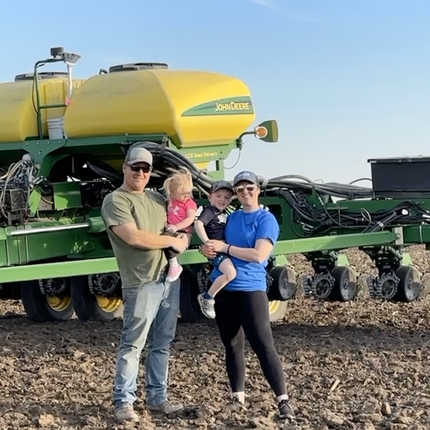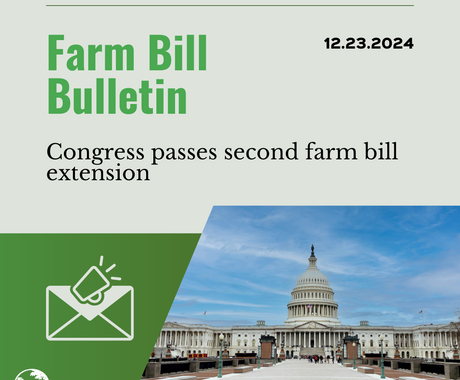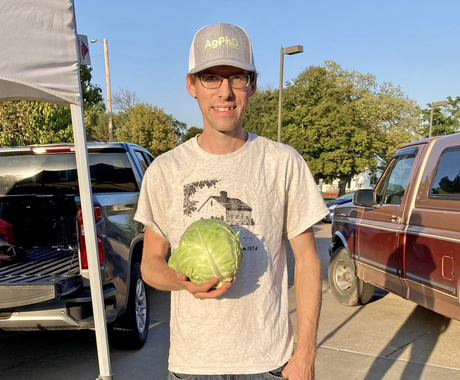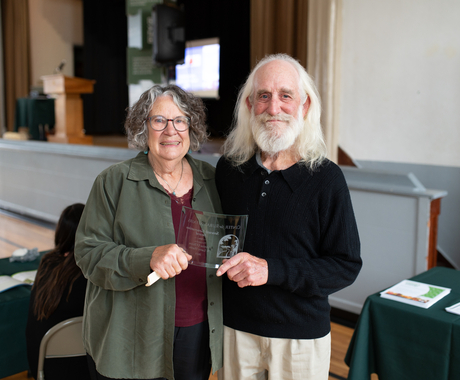The last day of 2023 is here. We present our most viewed blog post of the year, where we highlight Ryan Vogel who returned to his family farm. Ryan is using a cost-share through the Conservation Stewardship Program, a farm bill program, to implement projects such as cover crops on the land. This was written by Cynthia Farmer and was posted in October.
If you missed any of the top 5 blogs of 2023 you can click to read them here: #2 Conservation fellow cares for community, nurtures living things, #3: Military veteran pursues agriculture, provides support for other service members, #4: Memories of home inspire the idea for South Sioux City grocery store, and #5 Mobile coffee shop welcomes customers to gather at 'The Well.'
These stories are just a sample of what we've done this year. Thank you for reading our blog in 2023. We look forward to writing for you and working for rural America during the next year and beyond.
CSP helps young farmer, family prioritize conservation
By Cynthia Farmer
In southeast Iowa, Ryan Vogel and his family are laying a foundation on their farm for the years to come.
Ryan always knew he wanted to come back to his family’s farm near Sigourney. After earning a degree from Iowa State University, things fell into place for him to return and grow the operation. Today, he stays busy growing row crops and operating a land improvement business alongside his wife, Shelby, two young children, brothers, parents, and a handful of employees.
A key to the Vogels’ success has been diversifying their operation, both economically and in terms of management practices. They are always thinking of future generations who will work the land, and conservation continues to rise to the forefront.
“Every farm we farm, whether it’s our own or rented, we try to leave it better than we found it,” Ryan said. “Younger farmers are willing to try new things. Making those decisions to create change in an operation will help you stay in the game.”
The Conservation Stewardship Program (CSP) has played an important role in helping them implement new practices. Administered by the U.S. Department of Agriculture’s Natural Resources Conservation Service (NRCS), CSP provides financial and technical assistance for producers to address natural resource concerns for their operations while maintaining agricultural production.
CSP is designed for producers with existing conservation in place to scale up their practices. Ryan entered into the program doing no-till, and used his contract to plant cover crops and add practices such as low-drift nozzles, soil testing, tissue sampling, and a five-year nutrient management plan.
“I wouldn’t have ever done the cover crops if I didn’t get cost share through CSP,” he said.
After two years of seeing successes in their initial contract, the Vogels maxed out their eligible acres and have been extremely happy with the results. They have held two CSP contracts over the years, and also have multiple active contracts through the Environmental Quality Incentives Program (EQIP). EQIP is more targeted in nature and can help producers address a specific resource concern with a single practice or project.
“All of our contracts involve a cost-share of some sort to make it economically feasible for us—that’s why we do it,” Ryan said. “In the end, it’s about making the best economic decision for each operation, while also keeping in mind the impacts on the land and environment.”
Ryan also has a unique perspective on the programs. As part of his land improvement business, he has frequently served as a contractor on CSP and EQIP projects—including dirt work for terraces, ponds, waterways, and sediment basins.
“I deal with [the programs] every day,” he said. “Working closely with NRCS, I see there’s a lot of opportunity for farmers to incorporate conservation on their land.”
The sign-up period for producers interested in enrolling in CSP and EQIP is now open. In Iowa, the deadline to submit initial paperwork is Nov. 3.
A higher level of funding is available than in years past, and those with strong applications will have a good chance of approval. Interested producers should reach out to their local USDA service center to get started. To find your service center, visit offices.sc.egov.usda.gov/locator/app.
“I think conservation programs like CSP are a good thing, I really do. I’m glad we use them, and now knowing the benefits, we’ll definitely continue to do so,” Ryan said. “These programs are a perfect example of tax money going to work. Knowing that the future depends on keeping the ground in good shape, we can all do a better job.”





